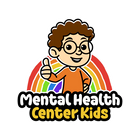Anxiety is one of the most common mental health conditions in children. It can manifest as constant worry, fear, or physical symptoms like stomachaches and trouble sleeping. Diagnosing anxiety is an important step in getting children the support they need.
With early and accurate diagnosis, children can receive the right treatment and can develop positive coping skills, which reduce the impact of anxiety on their growth and development.
This guide is meant to help parents, teachers, and caregivers in recognizing anxiety in children and understanding how diagnosis works. It explains common signs and symptoms, screening tools, and what happens after diagnosis.
Recognizing Anxiety Symptoms
Anxiety in children can affect their emotions, body, and behavior, and the specific symptoms may vary depending on the type of anxiety.
Emotional symptoms often include persistent worry or fear that seems stronger than what other children experience. Children may become clingy, have trouble calming down, or become easily upset. They may also show mood swings, irritability, or cry more frequently than usual.
Physical symptoms can accompany these emotional changes. Some children may complain of stomachaches or headaches, experience muscle tension, or feel their heart pounding. Restlessness, trouble sleeping, or excessive sweating are also common. These physical signs can make everyday routines, including school and play, more difficult.
Behavioral symptoms may include avoiding activities, places, or people that cause worry. Children might refuse to go to school or participate in social situations, seek constant reassurance, or act restless and fidgety. Some may also act out or display disruptive behavior, which can create challenges at home and in school.
Normal childhood fears come and go, but anxiety disorders are more persistent and disruptive. Consistent patterns of emotional, physical, and behavioral symptoms usually signal the need for a professional consultation and assessment.
Diagnosing Anxiety in Children
Anxiety in children can be diagnosed by qualified healthcare professionals, such as pediatricians, child psychiatrists, or licensed psychologists. School counselors and social workers may help identify concerns, but a formal diagnosis must come from a trained medical or mental health professional.
The process begins with a visit to the child’s primary care doctor or pediatrician. During this consultation, the doctor will ask questions about the child’s symptoms, medical history, and daily routines.
If anxiety is suspected, the child may be referred to a mental health specialist for a psychological evaluation. This evaluation includes interviews, questionnaires, and discussions with both the child and their caregivers.
As part of this process, professionals take a detailed history, asking about difficulties like school refusal, sleep problems, or stomachaches. They may also review daily routines and family interactions to see how anxiety appears in everyday life [*].
Parents are encouraged to share specific examples, since behaviors like tantrums, picky eating, or irritability can sometimes reflect underlying anxiety.
A thorough evaluation also helps identify the specific type of anxiety disorder, such as generalized anxiety, separation anxiety, or social anxiety.
After gathering a detailed history, professionals will rule out other conditions that might cause similar symptoms. For example, physical health issues, such as thyroid problems, sleep disorders, or gastrointestinal conditions, can mimic anxiety symptoms. Mental health concerns like attention-deficit/hyperactivity disorder (ADHD) or depression may also overlap with anxiety [*].
This is why a careful and comprehensive assessment is important, so that any underlying medical or mental health conditions are identified and the child can get the right treatment.
Screening Tools
When a professional decides a child needs further evaluation, they use standardized screening tools to gather information from the child and caregivers. These tools help show the type and severity of the child’s anxiety.
One widely used measure is the Screen for Child Anxiety Related Emotional Disorders (SCARED), which is a self-report questionnaire. It asks about a range of anxiety symptoms, including worries, fears, and physical reactions. Both children and their parents can complete it [*].
Another useful tool is the Pediatric Symptom Checklist (PSC), which is a brief questionnaire with 35 items that screens school-aged children for emotional and behavioral difficulties. The PSC presents easy-to-understand questions in places like pediatrician or family doctor offices to uncover possible anxiety, depression, or attention issues that should be examined further [*].
The Behavior Assessment System for Children (BASC) is also commonly used in evaluations. It provides a comprehensive view of a child’s behavior and emotions across multiple settings, such as home and school. The BASC has questionnaires for the child, parents, and teachers, which will help professionals understand how the child is doing and identify areas where support may be needed.
What Happens After Diagnosis?
After a child is diagnosed with anxiety, the healthcare professional will explain the results to parents or caregivers. They will describe the type of anxiety, how it affects daily life, and what the evaluation showed about the child’s signs and symptoms.
Next, they will discuss treatment options, which may include therapy like cognitive-behavioral therapy (CBT), coping strategies, or sometimes medication. The goal is to create a plan that meets the child’s needs and helps reduce anxiety.
Collaboration is important. Professionals work with parents, teachers, and other caregivers to make sure that support is consistent. Open communication helps everyone stay on the same page about the child’s needs and progress.
Resources
Families and caregivers seeking additional information or support for childhood anxiety can turn to these resources:


